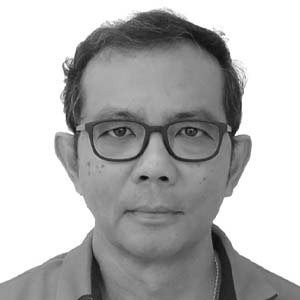The million-dollar question obviously, is how did she do it? There are two parts to the answer — by knowing her CPF top-up options and by letting the power of compound interest do its work over time.
Compound interest has been described as the eighth wonder of the world and with good reason. When you are paid interest on top of interest, the principal sum can snowball and grow rapidly.
Since the CPF Special Account (SA), MediSave Account (MA) and Retirement Account (RA) all earn a minimum of 4% compound interest, this means that whatever balances there are in these accounts will double in about 72/4 or 18 years.
CPF members below the age of 55 are entitled to top up their SAs any time to the Full Retirement Sum (FRS) which in 2023 is S$198,800. This can be either with cash, or by transferring their OA balances into the SA. If cash is used, a tax relief of $8,000 is available.
Individuals are also eligible to top up their MAs to the Basic Healthcare Sum (BHS) of $68,500. Again, tax relief is possible.
Now consider someone who at the age of 29 puts the FRS into his SA and the BHS into his MA. If this person stops work and does nothing further, then using the Rule of 72, the total of $267,300 will double in 18 years to about $534,600 by age 47 and this will again double to $1,069,200 by age 65.
Since it would be unrealistic to assume anyone would stop work at 29, then the actual total at age 65 would be a lot more than $1m as the person would have continued to contribute to his CPF throughout his working career.
Of course, an individual member will find it very hard to have sufficient funds to top up his CPF to $267,300 by age 30. It’s not impossible but it is very difficult. So perhaps a better alternative would be for a couple to combine their resources.
If each spouse puts $130,000 into their SAs and MAs at age 30 (which is very achievable), then the total of $260,000 will, over 36 years, grow to $1.04m by the time they hit 65.
Bear in mind, top ups are irreversible, and money can’t be accessed until 55 or 65. This might impact one’s immediate liquidity needs.
Many people know that if they were to sell their houses, they are obliged to return to their OAs the amount withdrawn from their OAs to pay for the mortgage plus the accrued interest plus housing grants, a sum which in total is known as the “property charge”.
What they may not know is that this requirement is in place solely to ensure the member can set aside the FRS in his RA if the house is sold.
However, once the FRS has been set aside, the charge is no longer needed and could in theory be discharged. It is kept open though, to allow the member to return the funds any time and earn the minimum compound interest of 2.5% paid for OA balances.
These refunds which are in cash can be done at any age – even before 55 – and this what Janet did at a relatively young age, which is a big reason why she has $1.2m in her OA.
Of course, she did it during a period of very low interest rates, so the 2.5% OA interest rate was attractive.
Today, with fixed deposit rates just below 4% members will have to decide for themselves whether making voluntary housing refunds is to their advantage.
One thing to consider is how much longer this period of relatively high interest rates can last.
For those who have sufficient funds, it is possible to top up their RAs at age 55 to the Enhanced Retirement Sum (ERS), which in 2023 is $298,200. This can be via cash or OA transfer. However, no tax relief is available.
The $298,200 will then grow at a minimum compound interest rate of 4% per annum and reach $443,100 by age 65. If the individual elects to start his CPF LIFE payments at this age, he will receive about $2,200 per month for the rest of his life.
This is likely what Janet did, since she had $400,000 in her RA.
Once your RA has been set up, you can continue to build its balance by tracking the increases in Retirement Sums over time to boost the monthly payouts to be received later.
For instance, assume you turn 55 this year and have managed to set aside the FRS of $198,800. Next year, the FRS will be increased by about 3.5% or $7,000 to $205,800.
You will be entitled to add $7,000 to your RA next year (on top of the interest earned). In 2025, the FRS will be raised to $213,000 and you can then add the difference of $7,200 to your RA and so on over the years to come.
You can check how much you are entitled to add to your RAs by logging in to the CPF website via SingPass.
Every year, an individual’s contributions to his CPF accounts are capped at $37,740. In other words, contributions by the member and his employer can add up to this amount annually but not exceed it.
Let’s say that you calculate that each year, your and your employer’s contributions add up to $25,000.
This means you can make a Voluntary Contribution (VC) of up to $12,740 ($37,740-$25,000) which will be split into the OA, SA and MA. If you over-estimate the VC top-up, the excess money will be refunded to you without interest.
Making VCs to ensure she reached the annual limit of $37,740 every year was yet another strategy employed by Janet from a young age.
Note that VCs can be made even if the individual has already brought his SA up to the FRS. Moreover, VCs can be done at any age, even after 55 or 65, which is what Janet has been doing.
If you’re aged 60 now, your RA would have been created 5 years ago.
Assuming you didn’t set aside the ERS or even the FRS, here are the options you can take to boost your CPF balances and retirement income:
If someone who turns 60 this year manages to top up his RA to the current FRS of $198,800 and assuming he does nothing further, he will receive $1,320 monthly for the rest of his life if he chooses to start his CPF LIFE payments at age 65 under the Standard Plan.
If the 60-year old manages to raise his RA to the current Enhanced Retirement Sum of $298,200 this year and ceases his topping up, his monthly payment at 65 will be $1,950.
If, however, he manages to also track the increases in Retirement Sums over the years ahead, his payments will clearly be higher than these amounts.
In a nutshell, seniors wanting to extract the full benefit of CPF and boost their retirement money can try to do what Janet did, which is maximise all avenues for topping up their accounts in order to enjoy the power of compound interest.
Of course, there are alternatives such as investing on your own in stocks and bonds. This can potentially be very rewarding, and you could, in theory, generate better returns than CPF.
However, almost all of these alternatives come with risk and if you are a senior, then taking risks with your life savings is not a good idea. On the other hand, using CPF means – like Janet – you will sleep well at night since the interest is guaranteed by the Government.
Not everyone will be able to emulate Janet and achieve million-dollar status by 65. She probably made many sacrifices along the way, postponing current consumption to save as much money as possible for her later life.








